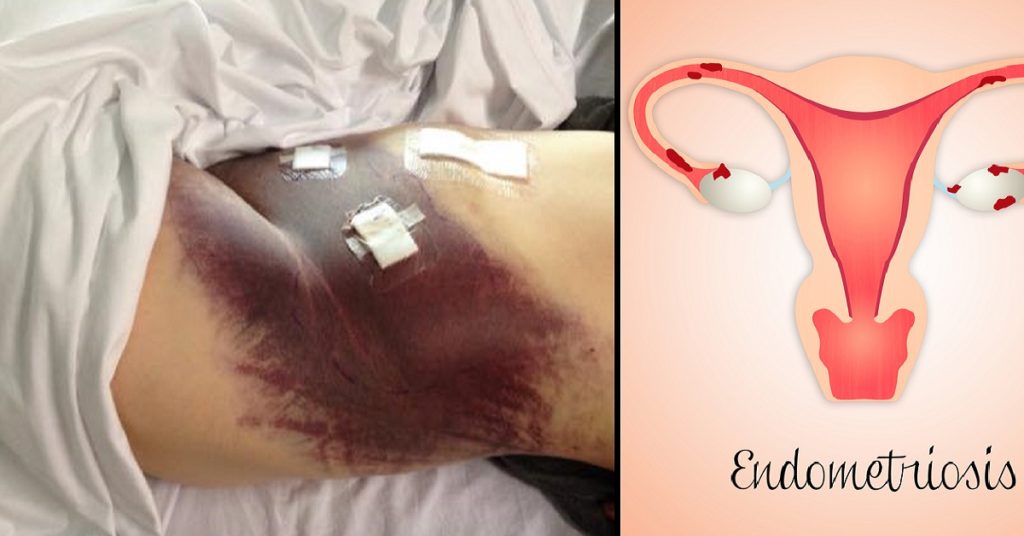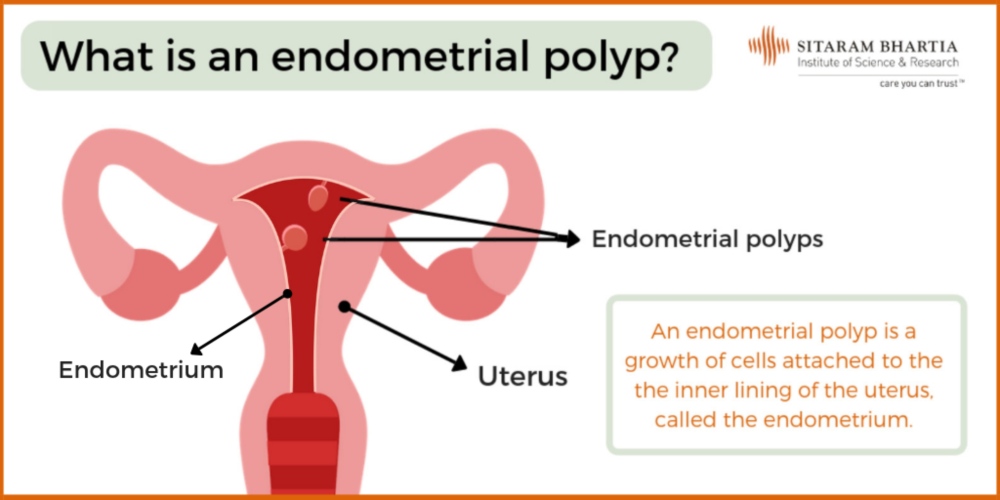When treatments and therapies can't fix an issue, sometimes surgery is required. Surgery to remove a woman's uterus or womb, a major component of this system, is called hysterectomy. Other reasons include severe endometriosis, including growths outside the uterus; slipping of the uterus into the vagina and perhaps tumors in the uterus, such as uterine fibroids.
During a hysterectomy, your doctor may remove the entire uterus or just part of it. The fallopian tubes, which connect the ovaries to the uterus, and the ovaries themselves may also be removed. There are several different ways to perform a hysterectomy. It may be done through a surgical cut in either the belly or vagina.
It may be done using laparoscopy, using a camera and smaller incisions, or it may be performed using robotic surgery. Your doctor will help you decide which type of procedure is best for you. After surgery, you will receive pain medications to relieve discomfort.
You may also have a tube, called a catheter, inserted into your bladder for a day or two to pass urine. You will be asked to get up and move around as soon as possible after surgery; this helps prevent blood clots from forming in your legs and speeds up recovery. How long you stay in the hospital depends on the type of hysterectomy. If you have a robot-assisted hysterectomy, you will likely go home the next day. Most women who have a hysterectomy, however, will stay in the hospital for 2 to 3 days, maybe even longer if you have a hysterectomy due to cancer. Recovery may take anywhere from 2 to 6 weeks, depending on the type of hysterectomy you have.
A hysterectomy will cause menopause if you also have your ovaries removed. Removal of the ovaries can also lead to a decreased sex drive. Your doctor, then, may recommend estrogen replacement therapy. Removing the problematic organs should keep you from having problems in this area again.
A woman's reproductive organs include the uterus , vagina, fallopian tubes, and ovaries. Hysterectomy is a common operation for women in the United States, second only to cesarean section . Because hysterectomy is major surgery with risks, alternatives to this treatment may need to be considered along with the benefits of having a hysterectomy. Women who have a hysterectomy stop having menstrual periods and cannot become pregnant or give birth.
Removing the uterus may speed the onset of menopause by several years. The March 24/31, 2004, issue of JAMA includes an article about hysterectomy for abnormal uterine bleeding. Vaginal hysterectomy is a surgical procedure to remove the uterus through the vagina. When the uterus is removed by making an incision over the abdomen, the surgical procedure is called an abdominal hysterectomy. The choice of surgery depends on the size and shape of the uterus and the indication for surgery, which is up to the surgeon. Following hysterectomy, a woman would no longer be able to get pregnant and their periods would stop as well.
Hence, if a woman is planning to retain her fertility, it is advised to inform the doctor, so they would be able to suggest other treatment options. Hysterectomy is usually indicated to treat various gynecological conditions affecting the reproductive organs when other treatment modalities are ineffective. The female reproductive organs include the vagina, cervix, uterus, fallopian tubes, ovaries, other accessory glands, and external genitals.
It may take longer or shorter depending on the extent of disease in the reproductive organs for which hysterectomy is being performed. If either one or both the ovaries and fallopian tubes are also removed along with the uterus, the procedure is called total hysterectomy with salpingo-oophorectomy. The hospital stays and the postoperative recovery period following vaginal hysterectomy are shorter compared to abdominal hysterectomy. Many variations of Gyn surgery can be done in women who have significant problems wioth the uterus.
If surgery is medically required or a reasonable option for a woman, and she has no plan for future pregnancies, then we like to consider LASH as a possibility. A hysterectomy involves the surgical removal of the entire uterus. When it is removed through an incision in the abdomen, the procedure is called an abdominal hysterectomy or TAH. When it is removed through the vagina, it is called a vaginal hysterectomy or TVH. When it is removed with the assistance of a laparoscope through small incisions, it is called a laparoscopic hysterectomy or LAVH. After a laparoscopic hysterectomy, women often have less pain, a shorter hospital stay, and quicker recovery time than after an abdominal hysterectomy.
If lymph nodes need to be removed and tested, this can be done through the same incision as the abdominal hysterectomy. If a hysterectomy is done through the vagina, lymph nodes can be removed using a laparoscope. A laparoscope is a thin lighted tube with a video camera at the end.
It can be put into the body through a small incision and lets the doctor see inside the body without making a big incision. The doctor can use long, thin tools that are put in through other small incisions to operate. A laparoscope is sometimes used to help remove the uterus when the doctor is doing a vaginal hysterectomy. This is called a laparoscopic assisted vaginal hysterectomy.
Laparoscopic procedures have shorter recovery times than regular abdominal hysterectomies, but often the surgery takes longer. Talk with your surgeon about how the surgery will be done and why it's the best plan for you. In a vaginal hysterectomy, the uterus is removed through the vagina.
With this type of surgery, you will not have an incision on your abdomen. Because the incision is inside the vagina, the healing time may be shorter than with abdominal surgery. Vaginal hysterectomy causes fewer complications than the other types of hysterectomy and is a very safe way to remove the uterus.
It also is associated with a shorter hospital stay and a faster return to normal activities than abdominal hysterectomy. Abdominal myomectomy removes fibroids through an incision in the abdomen, ideally a bikini line incision. Abdominal myomectomy allows the surgeon to easily see pelvic organs which may be difficult to see when a patient has very large fibroids or multiple fibroids in difficult to reach areas.
Based upon the patient's needs and condition, the physician and patient will determine the optimal procedure. The hospital stay can last from 1-3 days and recovery time is generally 2-6 weeks. Abdominal hysterectomy can be performed even if there are adhesions or if the uterus is very large. It generally requires a longer hospital stay and a longer recovery time than vaginal or laparoscopic hysterectomy. It is the second most commonly performed gynecological surgical procedure, after cesarean section, in the United States. Nearly 68 percent were performed for benign conditions such as endometriosis, irregular bleeding, and uterine fibroids.
It is expected that the frequency of hysterectomies for non-malignant indications will continue to fall given the development of alternative treatment options. The hospital stay for an abdominal hysterectomy is usually 3 to 7 days. The average hospital stay after an abdominal radical hysterectomy is about 5 to 7 days. A laparoscopic procedure and vaginal hysterectomy usually require a hospital stay of 1 or 2 days and 2 to 3 weeks for recovery.
Complications of these surgeries are not common and depend on the surgical approach. They include nerve or vessel damage, excessive bleeding, wound infection, blood clots, and damage to nearby tissues . The surgeon then removes the uterus, with or without fallopian tubes and ovaries, through the vagina. If the top of the vagina is sutured through keyhole incisions, the operation is called a total laparoscopic hysterectomy. If the gynaecologist stitches the top of the vagina through the vagina, it is called a laparoscopically assisted vaginal hysterectomy.
Compared with abdominal hysterectomy, laparoscopic surgery results in less pain, has a lower risk of infection, and requires a shorter hospital stay. You may be able to return to your normal activities sooner. It can take longer to perform compared with abdominal or vaginal surgery, especially if it is performed with a robot. Also, there is an increased risk of injury to the urinary tract and other organs with this type of surgery.
A hysterectomy is sometimes performed to treat a prolapsed uterus, endometriosis, uterine fibroids, or other bleeding and pain disorders in the lower reproductive system (1-3). They are also performed to treat or prevent reproductive cancers, such as uterine or cervical cancer . A doctor may recommend a hysterectomy to treat uterine fibroids, endometriosis, adenomyosis and other potential causes of pelvic pain or abnormal uterine bleeding. Hysterectomy may also be used to treat uterine prolapse and gynecologic cancers. Hysterectomy, the surgical removal of the uterus or womb, is the second most common surgery performed on women of reproductive age in the United States, second only to C-section.
During a hysterectomy, the doctor may remove other organs, such as the fallopian tubes and ovaries. Removing the fallopian tubes at the time of hysterectomy, which is called opportunistic salpingectomy, can help decrease a woman's risk of ovarian cancer. The surgery is called a lymph node dissection when most or all of the lymph nodes in the area are removed. This is usually done at the same time as the operation to remove the uterus . If you're having an abdominal hysterectomy, the lymph nodes can be removed through the same incision.
In women who have had a vaginal hysterectomy, lymph nodes may be removed by laparoscopic surgery. Both vaginal and laparoscopic procedures are considered minimally invasive because they involve smaller incisions. During a vaginal hysterectomy, the uterus is removed through the vagina. Vaginal hysterectomy generally causes fewer complications that either abdominal or laparoscopic surgery. Elderly and medically compromised patients can benefit from a vaginal approach because it eliminates the risks that can accompany an abdominal incision.
Typically, recovery is easier with less invasive methods of hysterectomy compared with abdominal surgery. Supra-cervical hysterectomy is removal of the upper part of the uterus, but not the cervix. This type of surgery is not recommended for women with a history of an abnormal Pap smear or certain types of pelvic pain. Up to 5-10% of women may continue to have chronic cyclic bleeding after surgery, similar to a period. It was previously thought that a supra-cervical hysterectomy would preserve sexual function better than a total hysterectomy, but research does not support this theory.
Benefits to supra-cervical hysterectomy include slightly shorter recovery time. U-M offers laparoscopic and robot-assisted laparoscopic approaches to supra-cervical hysterectomy. Uterine artery embolization is a minimally invasive procedure for treatment of uterine fibroids. Under local anesthesia a catheter is introduced into the femoral artery at the groin and advanced under radiographic control into the uterine artery.
A mass of microspheres or polyvinyl alcohol material is injected into the uterine arteries in order to block the flow of blood through those vessels. The restriction in blood supply usually results in significant reduction of fibroids and improvement of heavy bleeding tendency. The 2012 Cochrane review comparing hysterectomy and UAE did not find any major advantage for either procedure. While UAE is associated with shorter hospital stay and a more rapid return to normal daily activities, it was also associated with a higher risk for minor complications later on. There were no differences between UAE and hysterectomy with regards to major complications.
A hysterectomy may be used to treatcervical,ovariananduterinecancers. The procedure may involve removing the ovaries and fallopian tubes in a surgery called asalpingo-oophorectomy. If you have not yet reached menopause, a hysterectomy that removes the ovaries will cause your menstrual periods to stop. Ask your doctor about taking estrogen after the surgery to help lower your risk of heart disease and relieve menopausal symptoms. Recovery from a vaginal or laparoscopic hysterectomy takes much less time than from an abdominal surgery. After a routine laparoscopic surgery removing the uterus but not the cervix , most women are able to return to normal activity in 1 to 2 weeks.
About 4 to 6 weeks after the hysterectomy, see your doctor for a follow-up examination. The main treatment for endometrial cancer is surgery to take out the uterus and cervix. When the uterus is removed through an incision in the abdomen , it's called a simple or total abdominal hysterectomy. According to the National Center for Health Statistics, of the 617,000 hysterectomies performed in 2004, 73% also involved the surgical removal of the ovaries. In the United States, 1 in 3 women can be expected to have a hysterectomy by age 60.
There are currently an estimated 22 million women in the United States who have undergone this procedure. Nearly 68 percent were performed for benign conditions such as endometriosis, irregular bleeding and uterine fibroids. Such rates being highest in the industrialized world has led to the controversy that hysterectomies are being largely performed for unwarranted reasons. More recent data suggests that the number of hysterectomies performed has declined in every state in the United States.
If you have cancer of the uterus, cervix, endometrium or ovaries, or precancerous changes, your doctor might recommend a hysterectomy. Most often, treatment for ovarian cancer involves an abdominal hysterectomy, but sometimes vaginal hysterectomy is appropriate for women with cervical or endometrial cancer. As the name says, the procedure is done through the vagina and does not require any abdominal incisions. The same blood vessels and ligaments are secured and the uterus is removed through the vagina. A vaginal hysterectomy is always total and includes removal of the cervix. Post-operative pain is less and recovery is faster than an open abdominal hysterectomy.
Total hysterectomy is removal of the entire uterus, including the cervix . Surgical approaches to total hysterectomy include vaginal hysterectomy, laparoscopic hysterectomy, robot-assisted laparoscopic hysterectomy, and abdominal hysterectomy. If you have cervical cancer, uterine cancer, or severe uterine hemorrhage, hysterectomy may be the best choice for your health. Hysterectomy is often necessary and life preserving when invasive cancer is diagnosed; however, hysterectomy is frequently recommended when cancer is neither invasive nor life threatening. For pre-cancerous cells, there are a few options that you and your health care provider should discuss. Loop Electrosurgical Excisional Procedure can be used to remove pre-cancerous cells, and cryosurgery can be used to treat non-cancerous growths and abnormal tissue.



























No comments:
Post a Comment
Note: Only a member of this blog may post a comment.